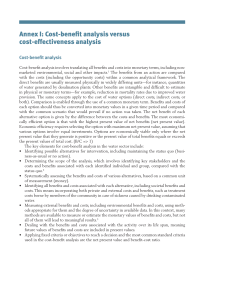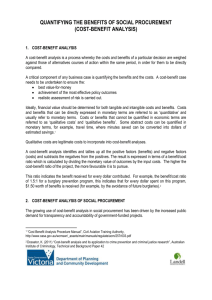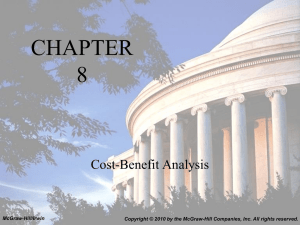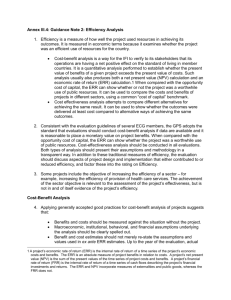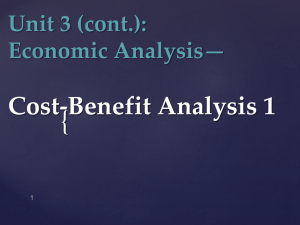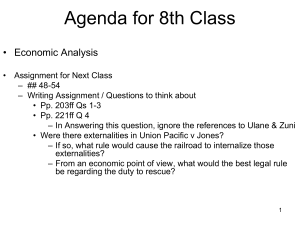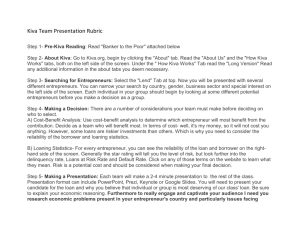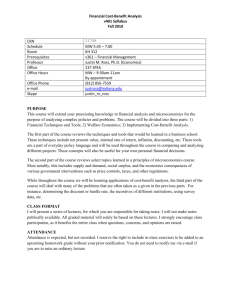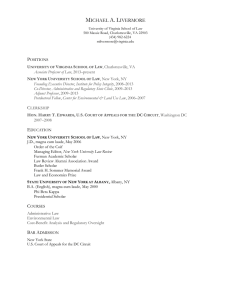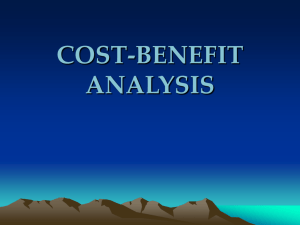Chapter 11: Measuring Efficiency
advertisement
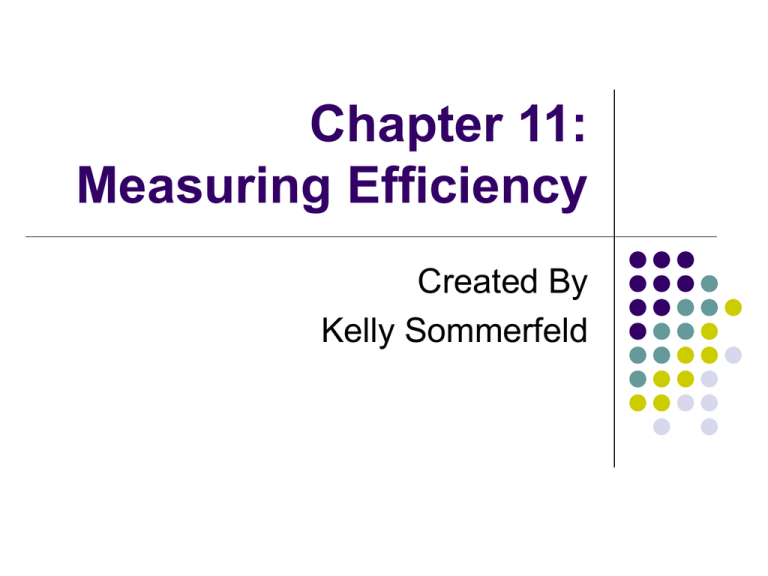
Chapter 11: Measuring Efficiency Created By Kelly Sommerfeld Introduction to Chapter 11 What are some examples of common resource allocation dilemmas faced by planners, funding groups, and policymakers? Cost-Benefit vs. CostEffectiveness Cost - Benefit: The outcomes of programs are expressed in monetary terms. Cost-Effectiveness: The outcomes are expressed in substantive terms. Key Concepts in Efficiency Analysis What is the value? What are the limitations? Ex Ante and Ex Post Efficiency Analyses (1) (2) Most commonly undertaken: Prospectively during the planning and design phase of an initiative (ex ante efficiency analysis) Retrospectively, after a program has been in place for a time and has been demonstrated to be effective by an impact evaluation, and there is interest in making the program permanent or expanding it (ex post efficiency analysis) Cost-Benefit Analysis Requires estimates of the benefits of a program and estimates of the costs of undertaking the program. Requires the adoption of a particular economic perspective Least controversial when applied to technical and industrial projects. Attempt to value both inputs and outputs at what is referred to as their marginal social values. Cost-Effectiveness Analysis Requires monetizing only the program’s costs. Benefits are expressed in outcome units. Efficiency is expressed in terms of the costs of achieving a given result. Conducting Cost-Benefit Analyses Assembling Cost Data Sources of Cost Data: Agency fiscal records Target cost estimates Cooperating agencies Accounting Perspectives Individual participants or targets Program sponsors The communal social unit involved in the program Measuring Costs and Benefits What are the problems? Identifying and measuring all program costs and benefits Difficulty of expressing all benefits and costs in terms of a common denominator (meaning translating them into monetary units) Monetizing Outcomes Money measurements Market valuation Econometric estimation Hypothetical questions Observing political choices In summary, all relevant components must be included if the results of a cost-benefit analysis are to be valid and reliable and reflect fully the economic effects of a project. Vocabulary To Know Shadow Prices Opportunity Costs Secondary Effects Distributional Effects Discounting Final Step in Cost-Benefit Analysis Comparing total costs to total benefits Most direct way is by subtracting costs from benefits after appropriate discounting Example: Program may have costs of $185,000 and calculated benefits of $300,000. In this case, the net benefit is $115,000. Conducting CostEffectiveness Analyses Based on the same principles and uses the same methods as a cost-benefit analysis. Contrast though is that the analysis does not require that benefits and costs be reduced to a common denominator. Programs with similar goals are evaluated and their costs compared. Efficiency is judged by comparing costs for units of outcome. Summary Efficiency analyses: Provide a framework for relating program costs to outcomes. Cost-Benefit analyses: Directly compare benefits to costs in monetary terms. Cost-Effectiveness analyses: Relate costs expressed in monetary terms to units of substantive results achieved. Resource Rossi, Peter H., Lipsey, Mark W., Freeman, Howard E. (2004). Evaluation: A Systematic Approach. Thousand Oaks, California: Sage Publications, Inc.

